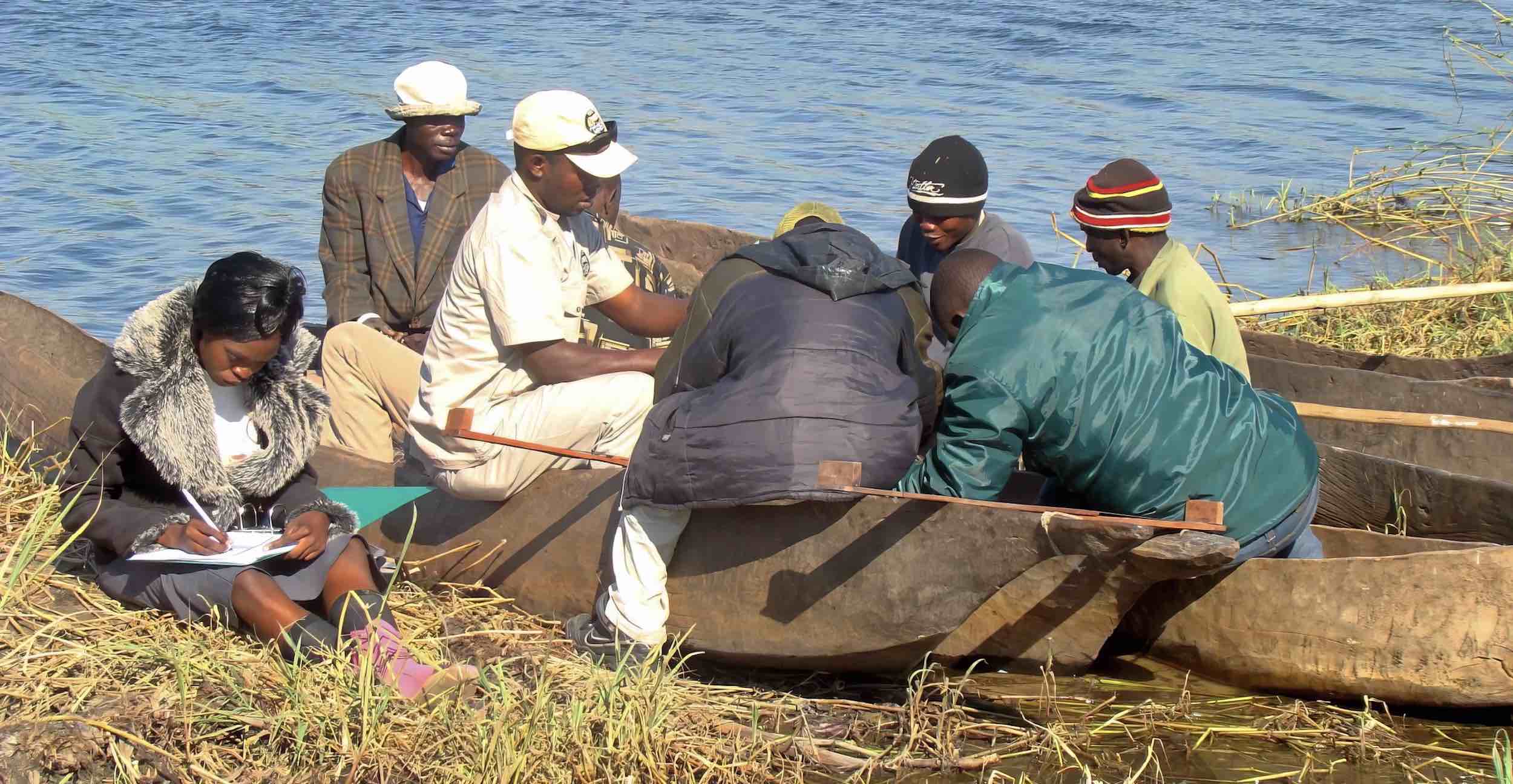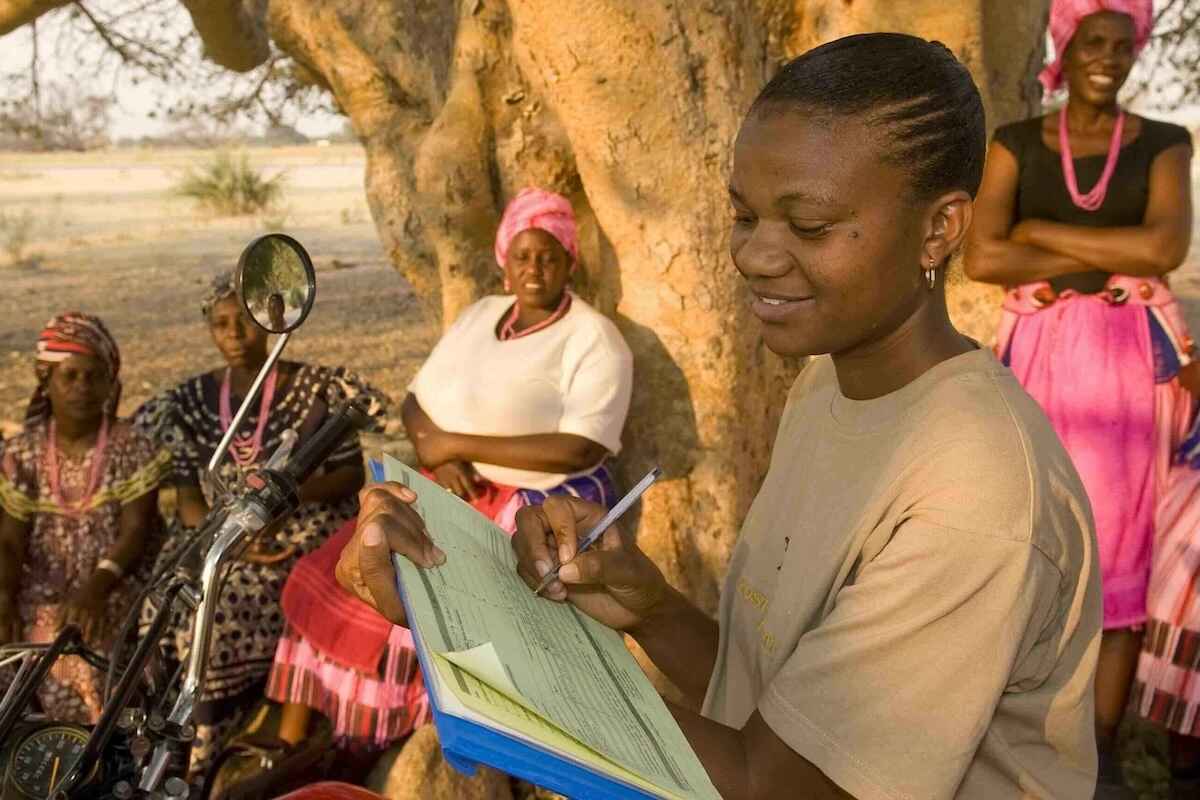
Why is it important to conserve Namibian inland fisheries?
River ecosystems are a critical part of life in the north-eastern regions of Namibia, both for wildlife and the people living along riverbanks. While these rivers flow all year round, they rise substantially when water flows from the highlands in Angola and Zambia after the annual rainy season. Depending on how much water arrives each year, the rivers rise and fill up the wetlands and floodplains in this part of Namibia and into the Okavango Delta in Botswana. These wetlands and floodplains play an important role in slowing down the water flow and serve as spawning grounds for fish. During this time of year fish stocks increase dramatically, providing a key livelihood for the riverine communities and supporting many other species in the ecosystem.
Recent studies have shown that the fish stocks are declining at an alarming rate (Hay et al. 2020). The rivers are being over-exploited by commercial fishers that often come from and export their catch to neighbouring countries. This has started to impact the local communities negatively, as they can no longer harvest enough fish for their household needs. The poorest and most vulnerable people in these communities are most severely affected – women, children and unskilled workers who depend on fishing to make a living.
What are Community Fisheries Reserves?
Studies in and around the Mahango Core Area of Bwabwata National Park have shown that the lack of fishing in this part of the Kavango River led to an increase in fish size and abundance in adjacent fishing areas (Hay et al. 2020). Maintaining a pristine riverine habitat further contributes to increased fish abundance. These results provide the scientific basis for establishing Fisheries Reserves – specific parts of rivers where fishing is not allowed.
The Ministry of Fisheries and Marine Resources (MFMR) has limited resources and cannot respond adequately to halt the decline in the fish resource. Establishing community-based Fisheries Reserves is thus seen as a potential solution to this problem. The Inland Fisheries Resources Act, 2003 (Act No. 1 of 2003) Section 22 makes provision for Fisheries Reserves to be gazetted by the Minister in consultation with the regional council, local authority council or traditional authority. To date, eight Fisheries Reserves have been formally registered by the MFMR, all located in Zambezi region. The Reserves are fully integrated into the management of six communal conservancies: Sikunga, Impalila, Mayuni, Balyerwa, Nakabolelwa and Lusese.
By establishing Fisheries Reserves, local communities are empowered to manage their own resources in a way that will increase their fish catches and ensure long-term sustainability. This also allows them to prevent non-resident commercial fishers from over-fishing their rivers and to enforce sustainable fishing regulations among local fishers. Among the most important fishing regulations is banning the use of monofilament fishnets that catch very small fish and even eggs, thus reducing fish production. Poorer households will especially benefit from these regulations through increased food security and income from sales of surplus fish. Another potential benefit is generating income through the tourism industry from lodges and private entities wishing to practice catch-and-release recreational fishing.
How are Fisheries Reserves managed?
The MFMR has collaborated with the Namibia Nature Foundation to develop guidelines to establish Fisheries Reserves, particularly as integrated parts of communal conservancies. The communities thus define and police user rights and enforce their own regulations within their Reserves. Although food security and income from surplus fish sales are important reasons for communities to protect fish stocks, they also derive cultural, recreational and social benefits from their fish resources. Local communities are therefore highly motivated to conserve their fisheries for current and future generations.
About 50 trained fish guards are employed and paid by their respective conservancies to prevent illegal fishing and ensure that fishermen in the conservancies are obeying the government fishing regulations. The presence of fish guards substantially alleviates logistical and financial burdens for MFMR and greatly increases their capacity to regulate fishing in this region. The MFMR inspectors play a facilitating role by assisting the fish guards during difficult situa¬tions in collaboration with the Namibian Police (e.g. arresting illegal fishers), and providing training for the fish guards on legislation and enforcement procedures. NNF assists by sharing information on fish biology and the status of the fishery resources with the conservancies to help guide their management decisions.
On a larger scale, NNF engages with fishing communities and authorities in Zambia, Angola and Botswana that use and regulate use of the same rivers and fish stocks. Trans-boundary fish conservation is critical for the long-term sustainability of fish stocks in these rivers and the overall ecological health of these globally important wetlands.
For articles on similar topics, please click one of the following options:
If you enjoyed this page, then you might also like:



Reference: Hay, C.J., Næsje, T.F., Jacobs, F.J., Simasiku, E.K. & Tweddle, D. 2020. Results and lessons learned after eight years of monitoring gill net catches in the Zambezi and Chobe Rivers, 2010-2018. NINA Report no. 1791. 60 pages. Norwegian Institute for Nature Research. ISBN: 978-82-426-4548-7.
We use cookies to monitor site usage and to help improve it. See our Privacy Policy for details. By continuing to use the site, you acknowledge acceptance of our policy.